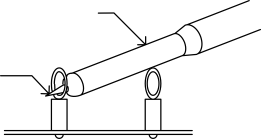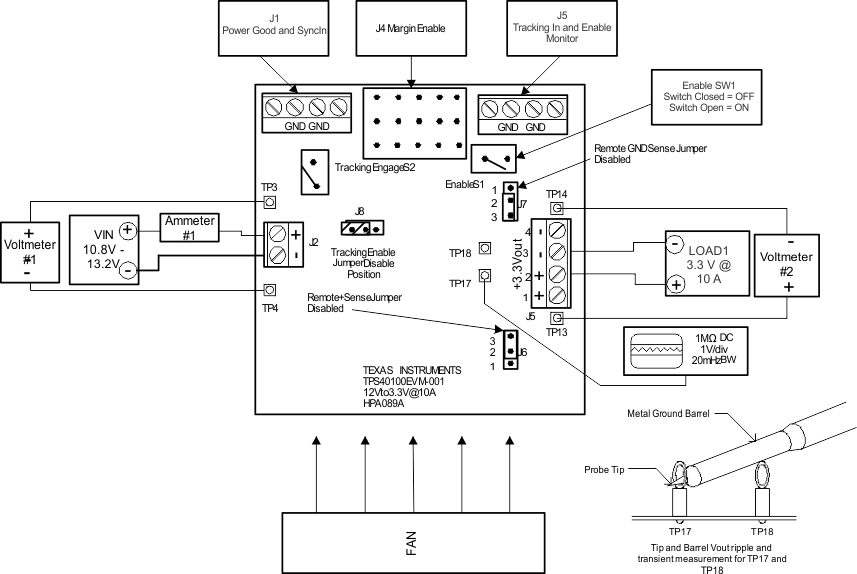SLUU224A May 2005 – March 2022 TPS40100
- Trademarks
- 1Introduction
- 2Description
- 3Electrical Performance Specifications
- 4Schematic
- 5Test Setup
- 6TPS40100EVM Typical Performance Data and Characteristics Curves
- 7EVM Assembly Drawings and Layout
- 8List of Materials
- 9Revision History
5.2.2 Procedure
- Working at an ESD workstation, make sure that any wrist straps, bootstraps, or mats are connected referencing the user to earth ground before power is applied to the EVM. An electrostatic smock and safety glasses should also be worn.
- Prior to connecting the DC input source, VIN, it is advisable to limit the source current to 5.0 A maximum. Make sure VIN is initially set to 0 V and connected as shown in Figure 5-2.
- Connect an ammeter between the positive output of the input supply and the positive input of the EVM (J2, Pin 1).
- Connect voltmeter #1 to TP3 and TP4. These are the EVM input supply monitoring points.
- Connect LOAD1 to J5. Set LOAD1 to constant current mode to sink 0 ADC before input voltage is applied.
- Connect voltmeter #2 across TP13 and TP14. This is the EVM output supply monitoring point. This configuration is local sensing.
- Remove the oscilloscope probe
jacket and position the probe as shown in Figure 5-1. TP17 and TP18 are implemented to provide the user with the means to achieve
good noise immune measurements of ripple voltage and transient response.
 Figure 5-1 Probe Position for
Ripple Measurement
Figure 5-1 Probe Position for
Ripple Measurement - Place a fan as shown in Figure 5-2 and turn it on, making sure air is flowing across the EVM.
 Figure 5-2 TPS40100EVM-001 Recommended
Test Setup
Figure 5-2 TPS40100EVM-001 Recommended
Test Setup